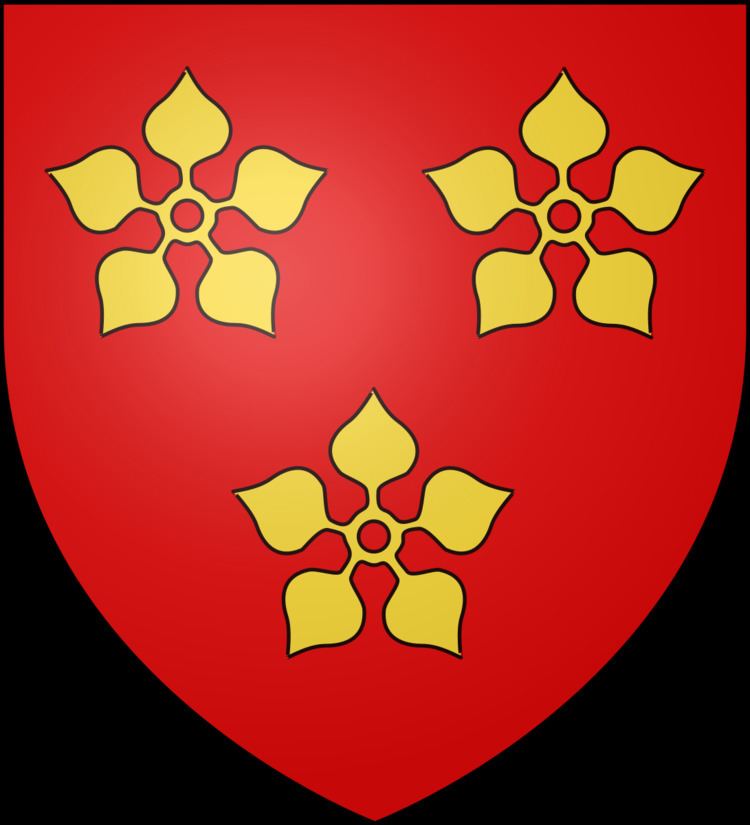 | ||
The House of Vergy is one of the oldest French noble families, a cadet dynasty related to the 5th century Merovingian Kingdom of Burgundy, attested since the 9th century.
Contents
Château de Vergy
The reputedly impregnable château de Vergy was sited on a rocky spur near Beaune in Burgundy (present-day communes of Reulle-Vergy, L'Étang-Vergy and Curtil-Vergy). The first fort on the site dates to the Roman period. The medieval castle was razed in 1609 and only small traces remain.
7th century
The first known lord of Vergy is Guérin (Warin) de Vergy, brother of saint Leodegar. Guérin was stoned around 681 at the foot of the rocky spur at Vergy, shortly after his brother's martyrdom.
First House of Vergy (9th–10th centuries)
The first house of Vergy arose in the 9th century with Warin, or Guérin, I of Vergy(760 – >819), who was count of Chalon and count of Mâcon, then count of Auvergne (818).
Second House of Vergy (11th–12th centuries)
In the 12th century Vergy was considered one of the most impregnable fortresses in the kingdom by Louis VII of France. Pope Alexander III took refuge there in 1159. It was during this era that the church of Saint-Saturnin was built, still to be seen today.
Castle (13th–17th century)
With the other Burgundian possessions, Vergy was merged into the royal domains in 1477, on the death of Charles the Bold. The castle was immediately ceded to William IV de Vergy-Autrey by Louis XI. In 1609, following the participation Charles of Lorraine (governor of Burgundy) in the Catholic League from 1589 onwards, Henri IV completely razed the castle. Except for the church of Saint-Saturnin, the burg of Vergy has now entirely disappeared.
Notable members
Bishops of Autun :
Bishops of Paris :
Bishops of Mâcon :
Archbishops of Besançon :
Turin Shroud
The Vergy family is the first historically attested owner of the Turin Shroud. It was Jeanne de Vergy who – in accordance with her husband Geoffroy de Charny's vows – put on the first showings of the relic at Lirey. The relic was twice absent in her castle at Montfort.
History of the Shroud and the Charny and Vergy families (excerpt of an electronic publication):
1353: Geoffroy 1st de Charny, a presumed descendant of the Knights of the Temple who died at the stake with Jacques de Molay, is allowed to build a church in Lirey.
1356: Death of Geoffroy 1st de Charny. His wife Jeanne de Vergy, gives the Shroud to the Canons of Lirey who keep it in their collegiate church.
1357: First public exhibition of the Shroud in Lirey collegiate church.
A pilgrimage medal, dating from that time, shows the image of the Shroud with very precise indications in spite of its small dimensions. On this medal one can see a frontal and dorsal view of the body, the linen herring patterns, four marks of burns as well as the coats of arms of the Charny and Vergy families. This pilgrimage medal is exhibited at the Cluny museum in Paris (France).
1378: Clement VII, Jeanne de Charny's nephew, is elected Pope...
